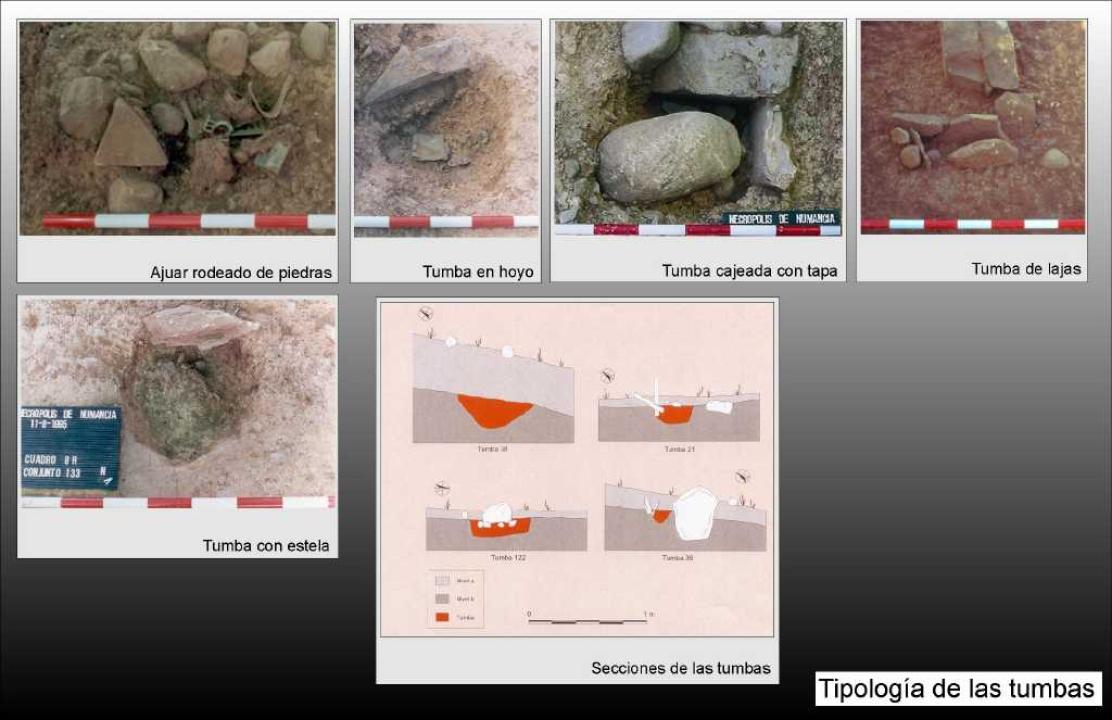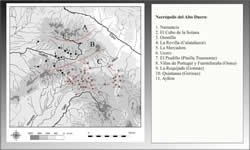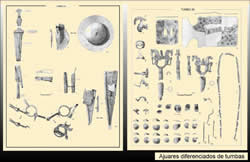

Known cemeteries in the province of Soria is divided into two areas: one south of the province, in relation to inventoried north of Guadalajara, another on both sides of the Duero in the central part of the province.
In all these cemetery must distinguish those which have continuity from the very beginning to the end of the world Celtiberian, even staying until the early stages of Roman imperial period (those Tiermes Ucero Alpanseque and others), well corresponding to a given time, and town (the merchants, Almaluez, Calatañazor Broom, Montuenga Aguilar, El Portugui of Osma and others) or recent (Monteagudo de las Vicario, Revilla de Calatañazor, Cubo de la Solana, Fuentelaraña de Osma, Numancia and others).
It is often pointed out the location of the graves with stones or stelae kneeling. The number of burials found in these cemeteries excavated and range from a hundred to one thousand two hundred tombs, differentiating two types, one with contrails form long parallel streets, and another where the wakes are the exception and burials are located in no particular order.
In these cemeteries have been documented in addition to the tombs consist of a hole in the ground, sometimes bordered stone elements, more or less care, from simple burials boulders stone structure. Inside are deposited the remains of the cremation of the body and personal items (furnishings), folded and unused ("dead ritual"), so his spirit was with the deceased to the hereafter, as examples of their own identity.
The remains may appear deposited directly into the ground or you previously entered in an urn or ceramic pot, at least the ashes and bones of the deceased.
In some cemeteries have been documented where they prepared the funeral pyre ustrina or where the dead were burned either in a designated area on the matter or, sometimes, next to the graves.




